Discovering the Mexican Caribbean by bicycle
Country: Mexico
From Bacalar to Cancún
Lesson learned: Monkeys and jaguars live further away from the highway
Most wonderful miracle: turquoise Caribbean beaches
Animals we saw: cicadas, butterflies, a baby crocodile, snakes, tarantula, colorful birds, iguanas, dragonflies, salamanders, geckos, chameleons, iguanas, mosquitos, pelicans, seagulls
Days on the bike: 5
Kilometers cycled: 374
Average kilometers per day: 74.8
Total kilometers cycled: 30,284
Mexican Caribbean by bicycle
Missed the last entry? Here it comes: Maya ruins and rain forest – Yucatán by bike
Blog auf Deutsch: Mexikos Karibikstrände mit dem Fahrrad entdecken
From the very first day on, we had fallen deeply in love with Bacalar. Over the years we had often heard the question “where did you like it best?”. Well, we still don’t have an answer to that. But now there is the one place where we could imagine settling down.
Bacalar is situated next to a lagoon that looks like the Caribbean Sea without waves. There were plenty of Maya ruins nearby, the main roads were wide and bike friendly, and there was jungle all around. Bacalar has a warm to hot climate all year round. That means no winters! Even though there is a hurricane season instead. There were no traffic jams, no parking space problems, not even traffic lights!
Everybody spoke Spanish, although learning Mayan was an interesting option too. While Bacalar itself was very calm, you could find shops, bars, restaurants, hospitals, cinemas and Caribbean beaches in only 40 kilometers in Chetumal. Chetumal airport even has international flights to Europe. From Cancún (some 400 kilometers) flights were sometimes really cheap.
It was only 35 kilometers to the neighbor country o Belize. On the road to Cancún there were numerous nature parks, cenotes and outdoor amusement parks. Bacalar was a “Pueblo Mágico”, so there was quite some national and international tourism. That would make it easier to find jobs. The only three negative points are hurricanes, heat and mosquitos that carried diseases. But I believe we could have lived with that.
You can imagine that it was pretty hard for us to leave Bacalar after only a couple of days. But we had bought our flights since spring and rather had five days for the way north, than four.
We left town before sunrise and reached the first village with a hungry stomach. We had just gotten a tea and coffee, when Bea showed up. She was the fifth bike traveler we had met within only a few days.
Bea came from Argentina and had barely started her travel a few days ago. “I’m still figuring our whether I like cycle touring or not”, she told us. If she did like it, she wanted to ride back home to Argentina. I didn’t even bother asking, what if she didn’t. She looked pretty convinced already.
Bea had converted some old color-buckets into waterproof panniers that even doubled as chairs. Great idea!
We chatted and chatted and when we were done it was hot already. Why would we spend the only few fresh hours of the day chatting rather than biking? Well, that’s how bike travelers do it. The sense of community is impressive.
Villages were rather far apart from each other, so by the time we reached the next one, we were hungry again. Pedro Antonio Santos was also known as “The pineapple village”. There were pineapple stands to both sides of the main road. How could you not stop? Maria, who owned and ran one of the stands, explained us the pineapple business. Her family had been one of the first families to cultivate pineapples here. She talked about the harvest times and the minerals, but what I found most interesting was how street stands work. It is common to see a row of 10-15 stands selling all the exact same stuff.
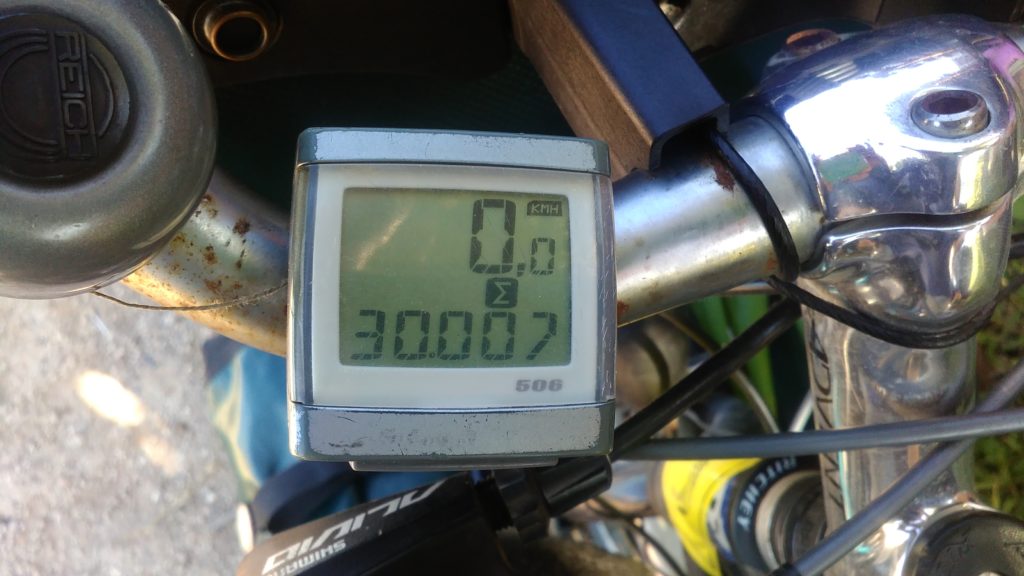
At some place today we crossed the 30,000 kilometer mark! Unfortunately we forgot about it, therefore we only have a picture of 30,007 Kilometers
How do people decide where to stop and buy? Would they stick to the very first few or return to the last ones, after they have made up their minds? No, Maria explained that it’s all about the presentation. “If I just hand around, maybe take a nap or look grumpy, nobody will stop at my stand. I have to be outgoing, smile, have a pretty and colorful row of pineapples or Aguas de Sabor, and wave to the people.”. Sounds logical, at least with us it had worked like a blast.
We were well rested and refreshed when we continued the ride. To both sides of the highway there were bushes and tall grass for some meters, and then the impenetrable jungle began. It was truly like a green wall, with the first one or two rows of trees visible only.
At two occasions, they had cut a part of the first row of jungle off, so we could see the inside. On top there were the green treetops and further down all I could see were brown-grey-black trunks and branches. It was pitch dark inside the forest and there weren’t even any plants on the ground without any sunlight.
I decided to look out for monkeys and jaguars nevertheless, how could it be that I still hadn’t seen any? Instead I spotted plenty of very colorful birds of all sizes and shapes, some iguanas, a couple of tarantulas and many butterflies.
There was hardly any traffic and it remained mostly flat. We biked so fast that we passed the place we wanted to spend the night at, already in the afternoon. We did stay in the next bigger town though, because if there’s one thing we have learned, it was that sometimes there was nothing but jungle all around and the green was so dense that there was no space for a tent, or even a person with bike (unless you bring a machete and know how to use it).
Distances between the villages were even bigger next day. Just like back in the Baja. Finally we reached a village and took our brake at Carlos’ stand. Carlos sold corn, cut fruit (with chili, lime and salt of course) as well as Aguas de Sabor. We had paid some 10 Pesos for a liter of Agua de Sabor back in the center of the peninsula.
Here it was 15 for half a liter. But we didn’t forget that the cost for ingredients and for living is much higher here near the coast, so we happily paid a little extra. Of course you never know if this was a tourist price or not, but in the end what does it matter? If we feel like it’s still worth the deal, we buy it. If we feel it’s too expensive, then we don’t, simple as that. In the end Carlos deserved to have a fair income too.
Every morning, so he told us, he got up early to prepare the fresh coconut water, cut out the coconut flesh, mix the dragonfruit Agua de Sabor, as well as the lemonade and pineapple Agua. Then he boiled corn and pushed his little card to the crossroad with the tope (speed bump) where we had met him. He had never returned home with something unsold. Usually business was quite good and he was done my afternoon, but sometimes he remained standing at his Tope till the evening.
One village further we biked past an old Maya pyramid. There were no fences, no gates, nobody charging an entrance fee. We could even bring our bikes! A little boy explained us how his grandfather had found the ruin and therefore it was still considered as the family’s property. His family was building a palapa next to it, so they could sell snacks and handmade souvenirs. I asked our little friend, whether anybody had ever camped here. “Sure, a couple of Gringos stayed, we charged them 100 Pesos each!”, he smiled. “Oh, is that the same price for Mexicans?” “Nah, Mexicans can stay for free”.
Reminded me a lot of my time as a student. In the zoo they weren’t quite sure whether to charge for the student price (10 Pesos), the normal price (20 Pesos) or the foreigner price (60 Pesos). I had always considered this pretty unfair, but that’s how many things worked in Mexico.
Life’s not always sunshine and roses here either. When Roberto asked for the price of an item in a touristy place, they would tell him in Dollars and then find a calculator to pretend to be searching for the equivalent in pesos. Our friend Alicia had gotten into numerous discussions with strangers who wanted to see her birth certificate because they simply couldn’t believe how a true Mexico-born Mexican could be blonde.
We continued the ride and stopped after a few hours at a place where they sold grilled chicken. What a timing! There was no village anywhere near and it had just begun to rain. Apart we were really hungry. So while we chewed our delicious portion of chicken, I looked over to the garden. Lots and lots of hens and roosters ran around annoying the dog, playing with each other and finding worms.
I have to admit that it was a bit of an uneasy feeling to sit there surrounded by chicken, whose buddy I was eating. But then again it’s probably much better to eat a chicken that I knew has had a happy life with his friends, than an oval-shaped piece of an anonymous chicken from an unknown place. The restaurant’s owner explained that she killed some ten to twenty chicken every couple of days, and she seemed to live quite alright with that.
After one last stop at the ruins of Muyil, we finally reached Tulum. After two days inland, this was where the road would meet the Caribbean Sea for the first time. Time for camping at the beach! We got ourselves a sixpack of beer, pitched the tent at a simple beach campground, and walked the 20 meters to the sea. We had just put the picnic blanket, when a young family approached us.
The lady shouted “Robertooooo!” and left me very confused. It took a while for me to realize that we had met this family three years ago back in Laos! They used to live in London then and had one toddler. Now Washington DC was their home base and they were a family of four. Since Cancún wasn’t further of a flight than for example Los Angeles, the Mexican-Indian family went down here quite a lot. What are the odds of meeting right here in Tulum after all these years?
The Caribbean was truly one special place. Just look at those colors! Then there were the gentle waves, the fine white-yellow sand (so fine that you’ll never be truly clean though) and all the palm trees! Well, we had turquoise water and white sand back in Tonga or Thailand too, but this was different. Why? Well, because this was Mexico and it was full of Mexicans.
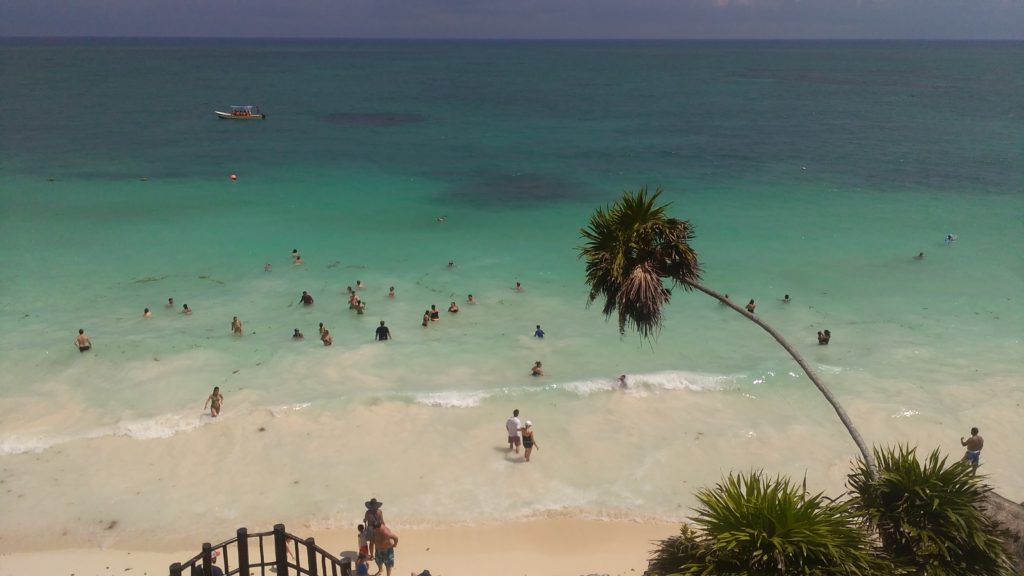
We visited the ruins of Tulum a few days later. There was an extra beach inside and a lot of people went for a refreshing swim in between Mayan ruins.
There was music and there was drama. Often you would hear three different songs played from three devices around you. People would approach you and try to sell you something and everybody treated them with respect and either declined thankfully or made use of the service. There was beer, there were people having loud arguments and making up, declaring their love for each other, just as loudly.
There was playing, dancing, joking and there were children all over the place. Most families had brought a big cooler box full of homemade treats, hearty and sweet, spicy and salty. They brought cool drinks with limes, at least one huge parasol, beach toys, chairs, a kite and paper plates.
I’ve never seen a Mexican family running out of food at the beach. All we had brought were the rests of our breakfast empanadas, so we sat down on our blanket, dipped the soggy empanadas in the spicy sauce and enjoyed the view, the salty air and the liveliness around us.
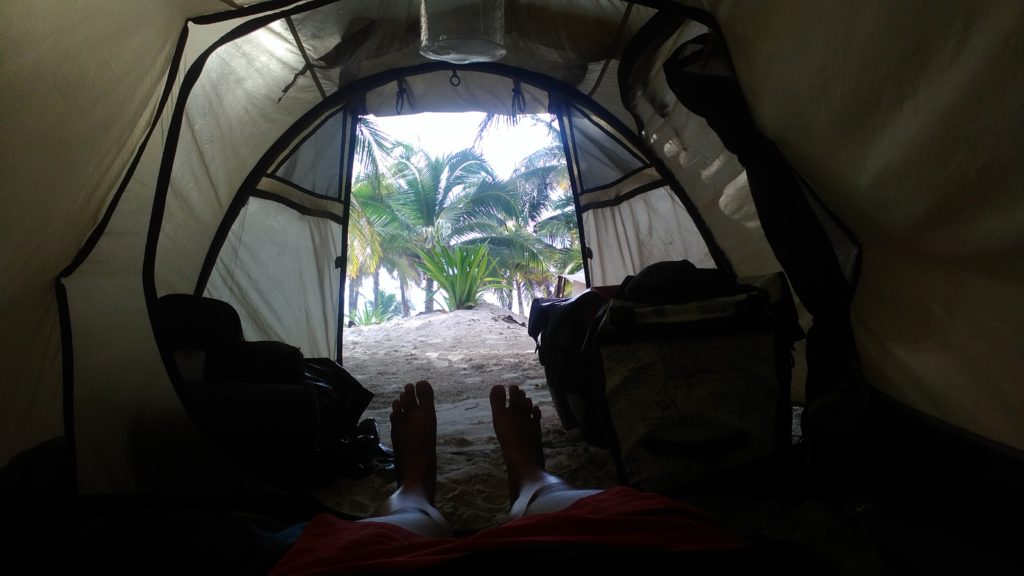
Our view in Tulum. The Playa Roca Campground was protected from the wind and yet only 20 steps from the beach.
I’m pretty happy we spent all evening outside, because the next morning started out really rainy. We waited till 11 am, then we got going despite the rain. Finding food wasn’t that easy anymore. The area between Tulum and Cancún was called the Riviera Maya.
That’s some 130 Kilometers of luxury hotels, lots of traffic and – most sadly – no more cheap food stands. In fact there were no food stands at all. Not even small carts like the one Carlos used. People probably would have needed some kind of license to see here.
We were rather slow on our bikes and we usually read everything we can spot on the way. Due to our slow speed we even had the time to read the hotel’s announcements entirely. “Public access to the beach” it said in small letters on the very bottom. Nice!
We took a turn, parked the bikes next to a beach bar, and hopped in the water. Several hotel guests had carried their beach chairs half way into the water. They enjoyed a colorful cocktail, felt the waves at their feet and the sun on their heads. A bit further out, a SUP beginner’s group had just started their first trial session. They were still busy trying not to fall. Even without a cocktail or a board, we could have stayed for hours.
Eventually we got going again. We stopped in Akumal to get cash. Well, since there was a beach anyways, we might as well have a stroll. I was searching for a parking spot for the bikes, when Roberto started chatting to two other men. By the time I had found a safe spot, there were already some eight people around him, he looked like a minor celebrity there.
Akumal was famous for its sea turtle tours. But we neither had the money nor the time now, we’ll do that on our next visit. Instead we biked on till Xpu-Ha (pronounce Spoo-Ha), where we pitched the tent on the beach again. This time we were the only ones on the beach at night.
We finished our beers and I decided to have a stroll along the beach. I had read about phosphorescent animals in the water and wanted to see if these were glowing waters too. Nope. Just because I saw a video on that stuff on facebook doesn’t mean it has to be true. In the water’s defense it was a near full moon.
While we were walking, we heard some music coming from the other end of the beach. “Let’s have a look”, Roberto suggested. “Maybe there’s a party!”. Roberto wore his flipflops, I wore no shoes at all and we had some sweaty shorts and shirts on, but we didn’t care too much, until we got closer. What we thought would have been a private beach party, turned out to be a boutique hotel of five stars.
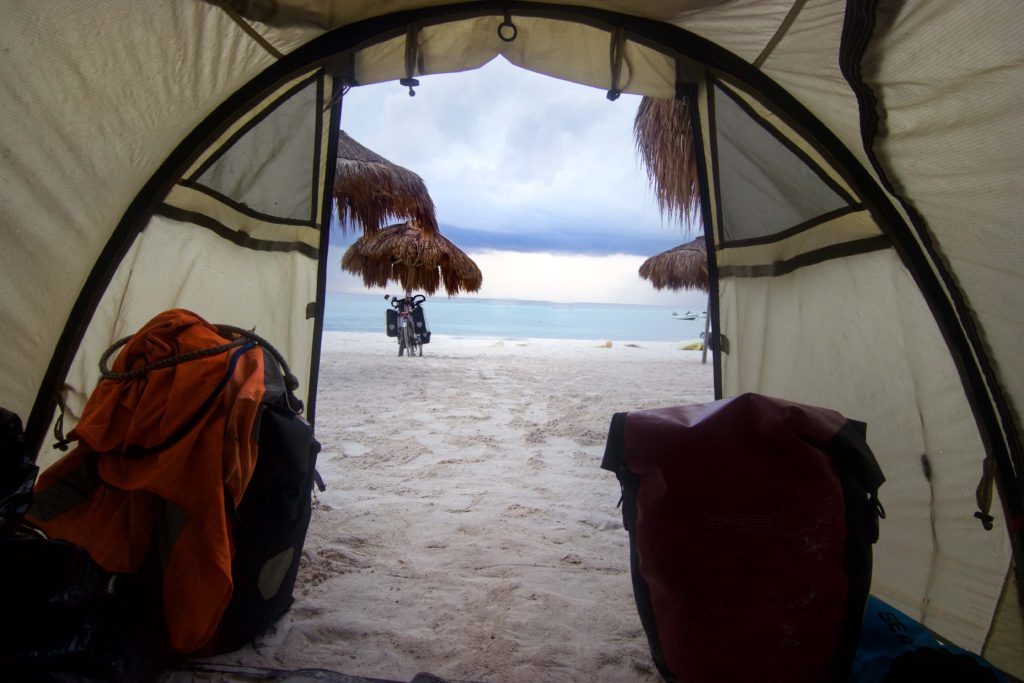
A room with a view. We may nit have a memory foam mattress or air-conditioning but we had a beach all to ourselves and the stars above our heads.
The music wasn’t quite our style. Some people sat down on modern chairs and stared at a large screen with moving colored shapes that reminded me on the old windows screen savers. There were floating flowers in the two upscale pools and the Jacuzzis.
Everything was perfectly clean and built of extravagant materials in pretty colors. We had a walk through the grounds and Roberto decided to ask for the price of a beer. Subsequently we were politely asked to leave the premises. Club guests only.
It wasn’t till the following day that we saw the monstrous building from the outside. It was as fancy as it got. I have to say that the couple of Pesos we paid for pitching the tent on a beach that we had all to ourselves, was – at least for us – worth far more than any 5-star hotel could ever give us.
We continued the ride and were a little disappointed. All we saw was more of these 5-star mansions, 5-star hotels, heavily guarded housing complexes, and golf courses. There were quite some cenotes and nature parks here and there, but they all charged an entry fee.
Eventually we reached Playa del Carmen. The city with its 150,000 habitants had started out as a calm little fishing village. In 1992 it was home to 10,594 people and then the tourism down here exploded and the city grew in record time. It was loud and there was lots of traffic. We followed a nice little bike lane. When it suddenly ended in a wall, we continued on the busy road. There was traffic, noise, grey buildings and traffic lights. They say the downtown and the beach were marvelous, but we just wanted to get out of the city.
We spent one last night near the sea, before we started our last day of cycling in America. The last 25 kilometers in Cancún were the hardest. We biked through the hotel area on a busy road with no shoulder. The buses were the worst.
One nearly ran me over. In the following days we would be near-overrun again and again as pedestrians and in a car, and we’d even be fearing for our lives inside one of these monsters.
Roberto’s parents awaited us in Cancún. They had been flying all night from Tijuana. And we were all invited to a pool-BBQ-party! Jaclyn from Germany had read about us on her vacations back home.
Without even knowing us, she had invited all of us to a party at her place! After less than 12 hours in town we had already made a lot of very nice friends.
We had a simply marvelous week with the family in and around Cancún. But time flew so fast and before we realized, it was time to change the continent. The adventure would continue in Spain!

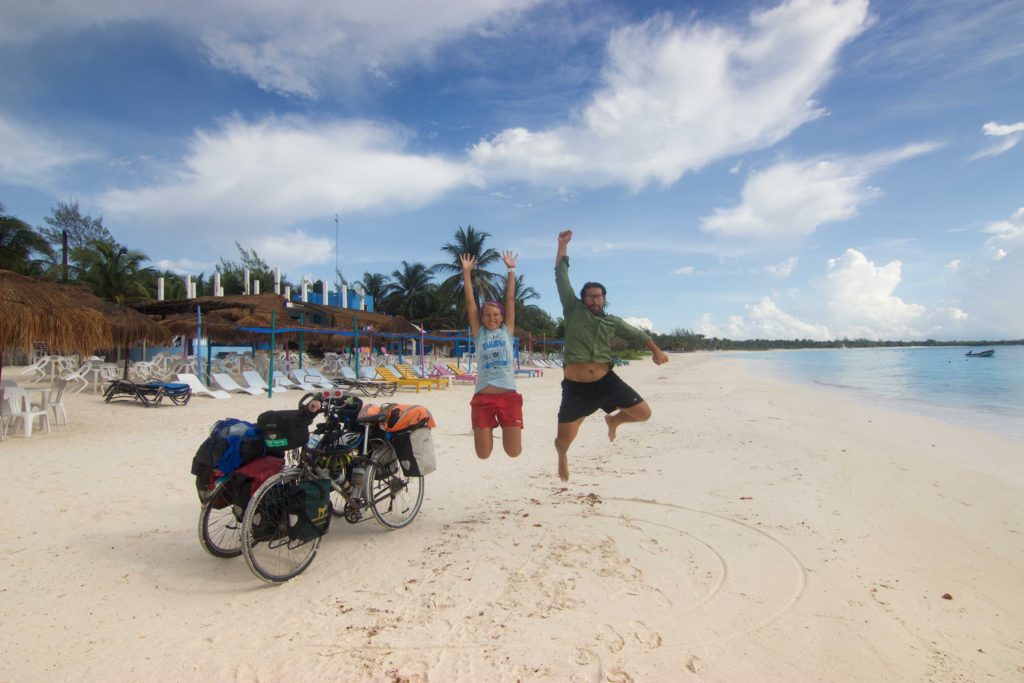
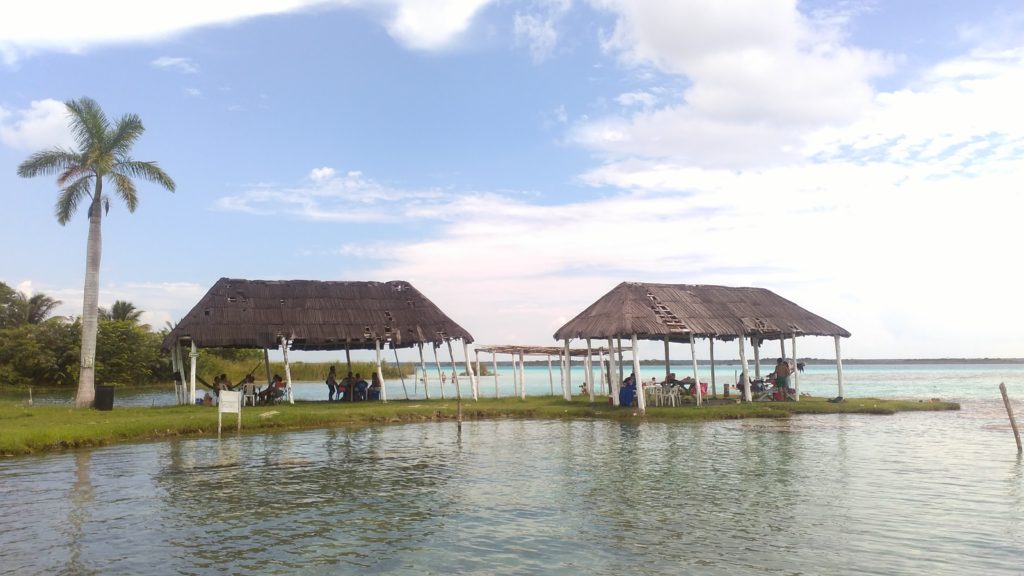
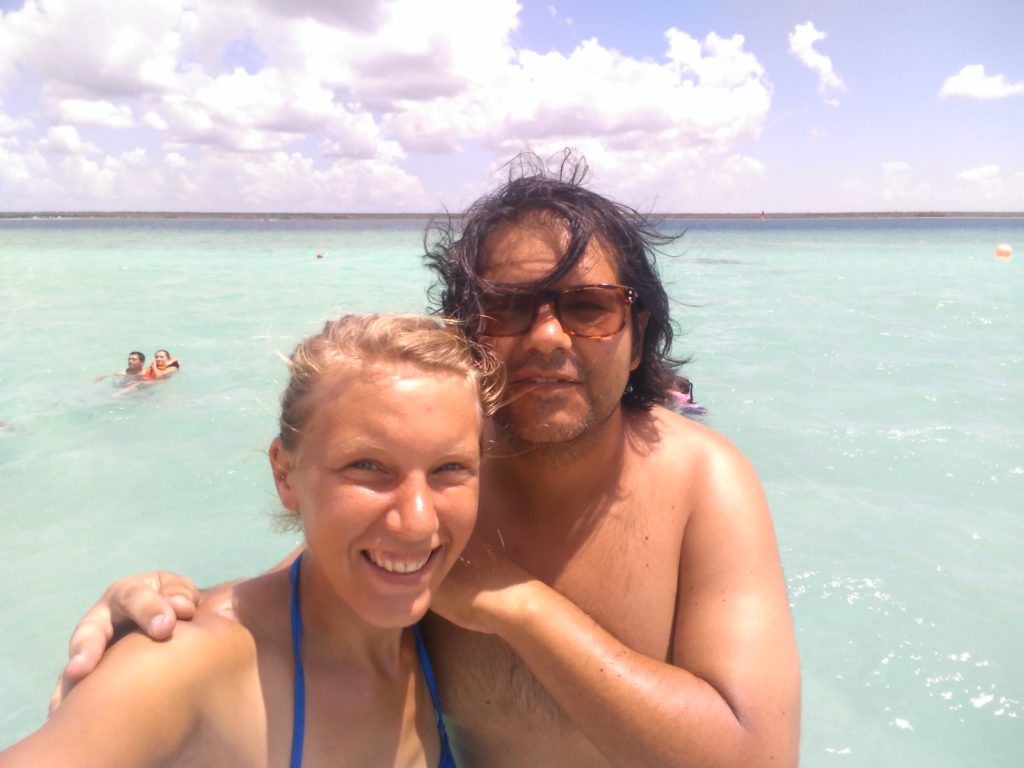

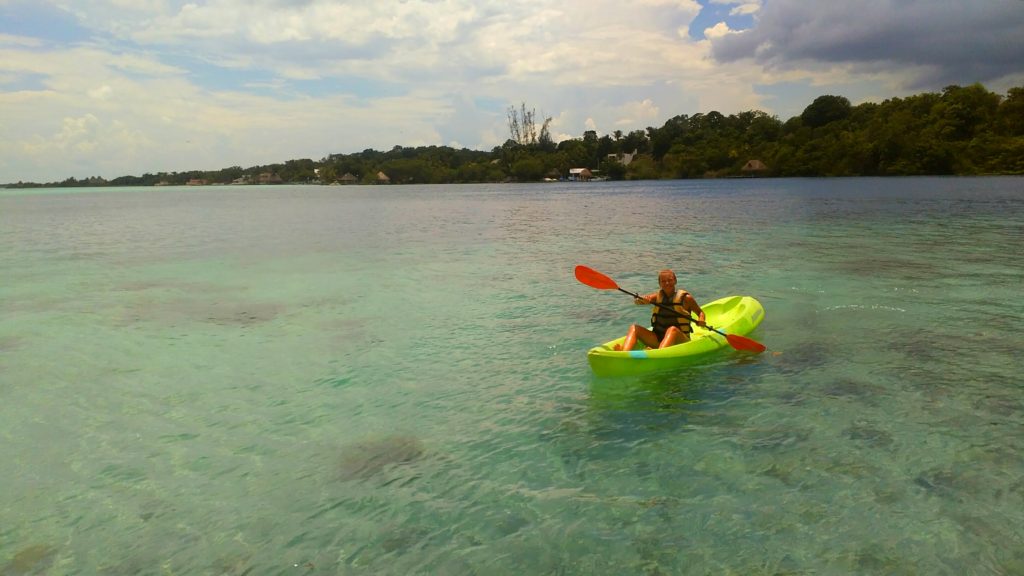
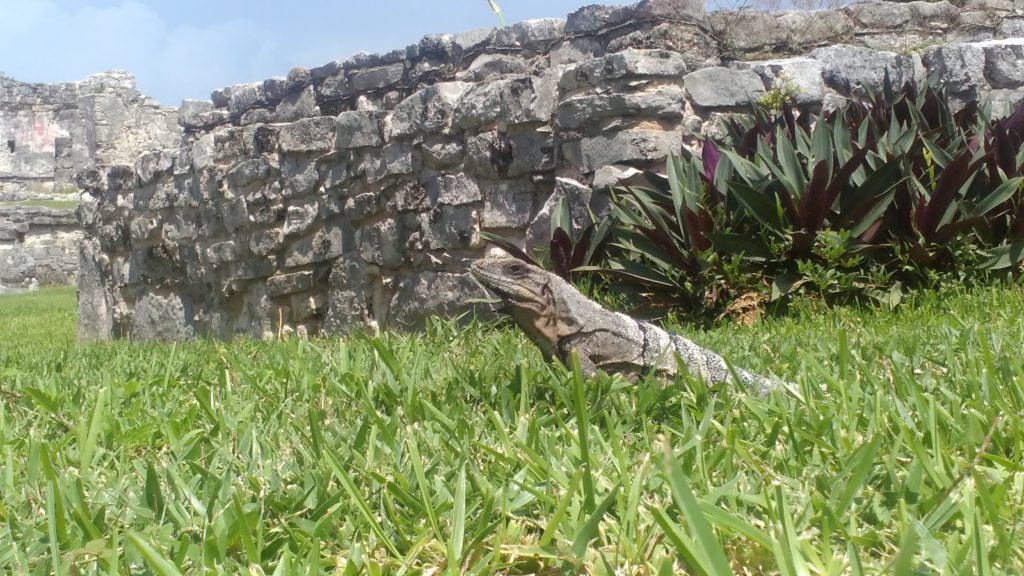
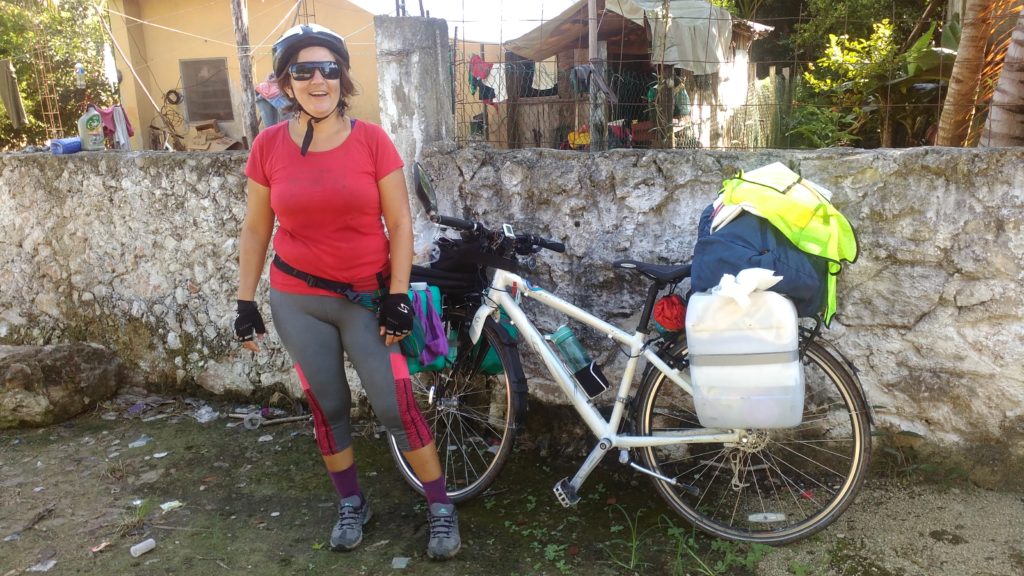
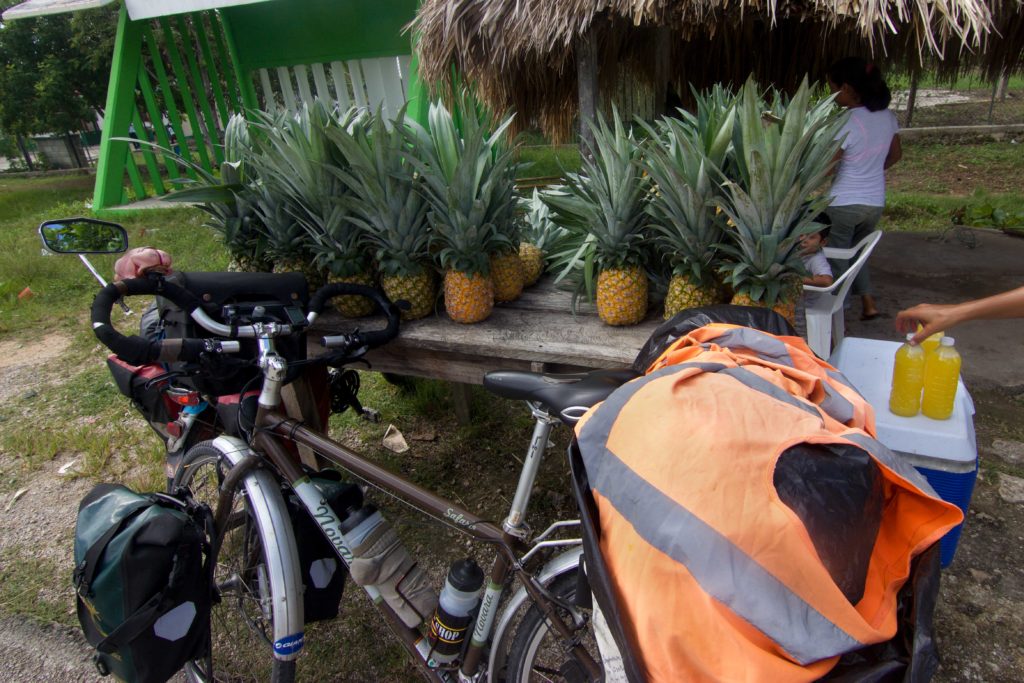
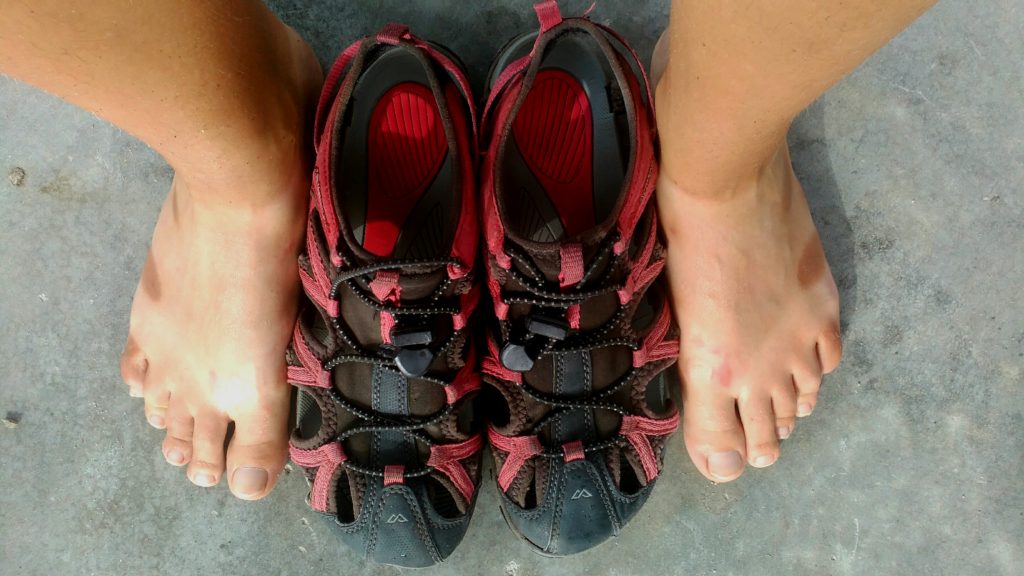
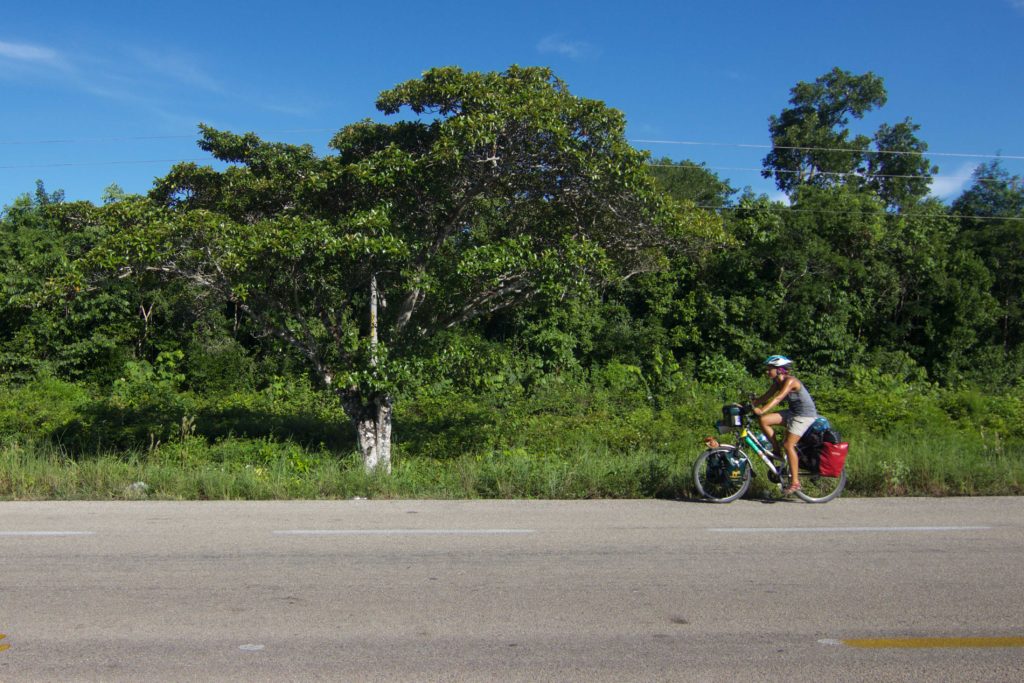
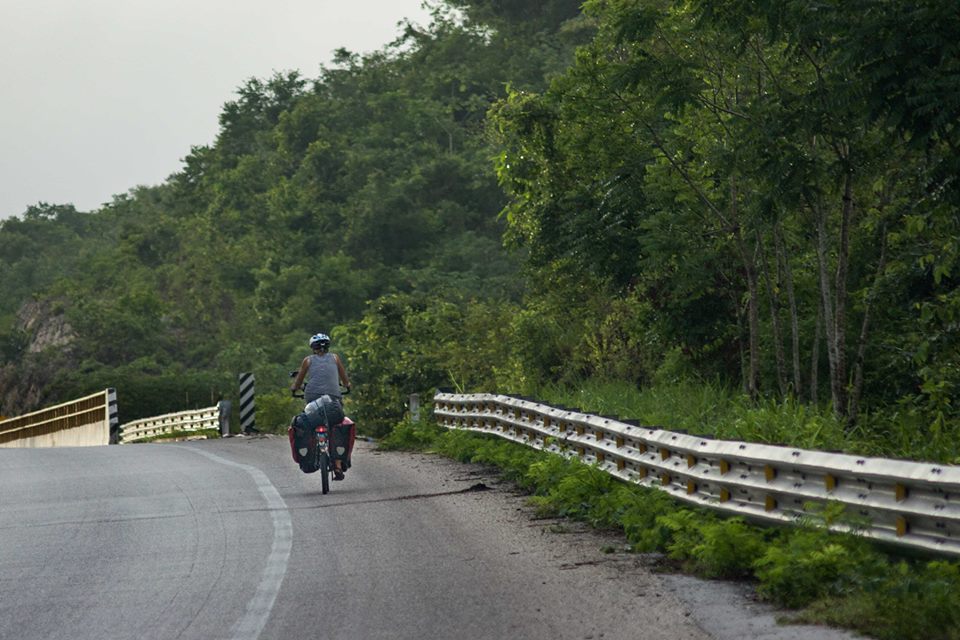
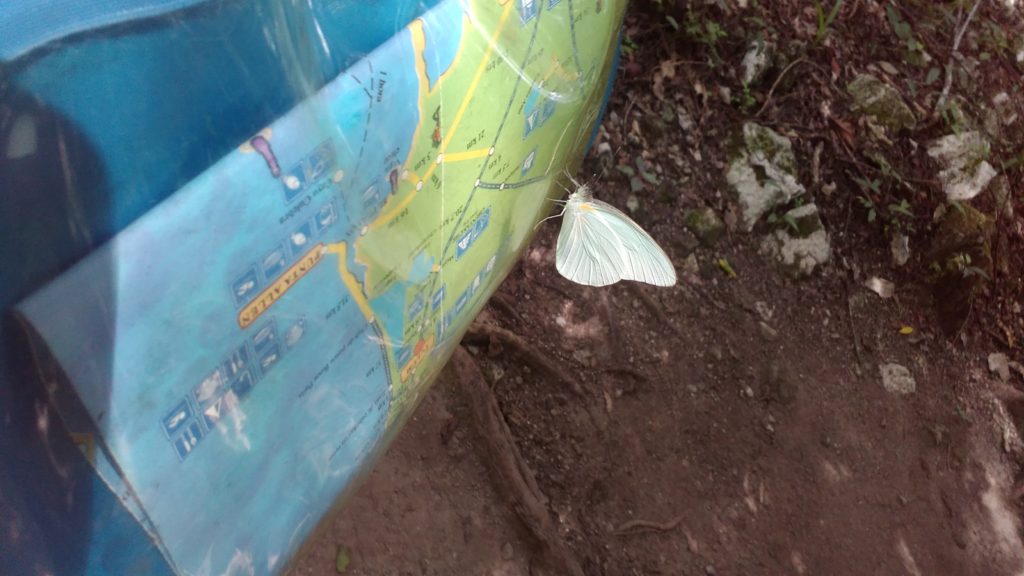
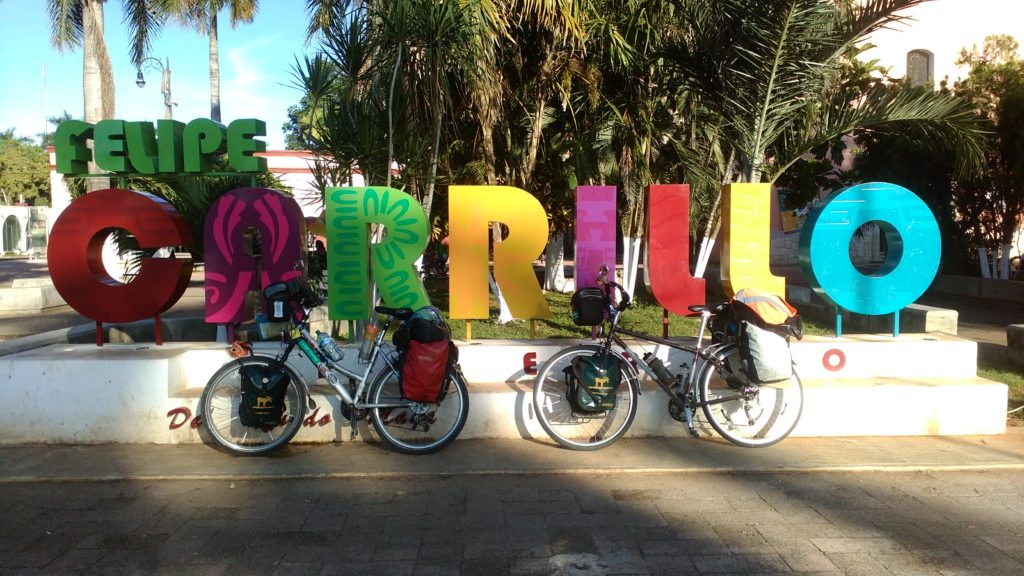
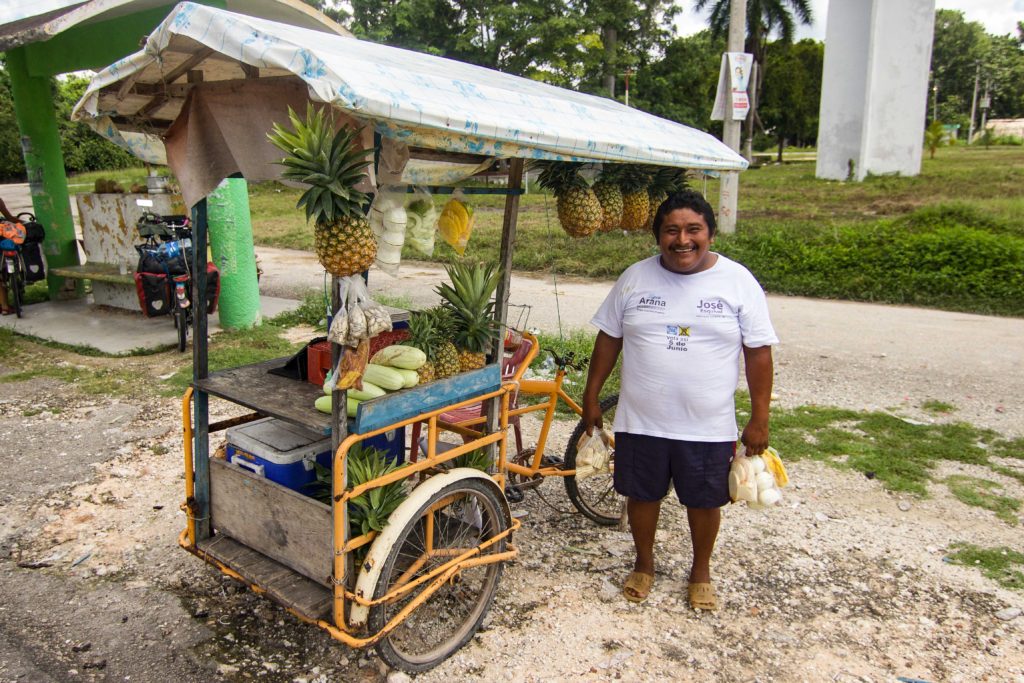
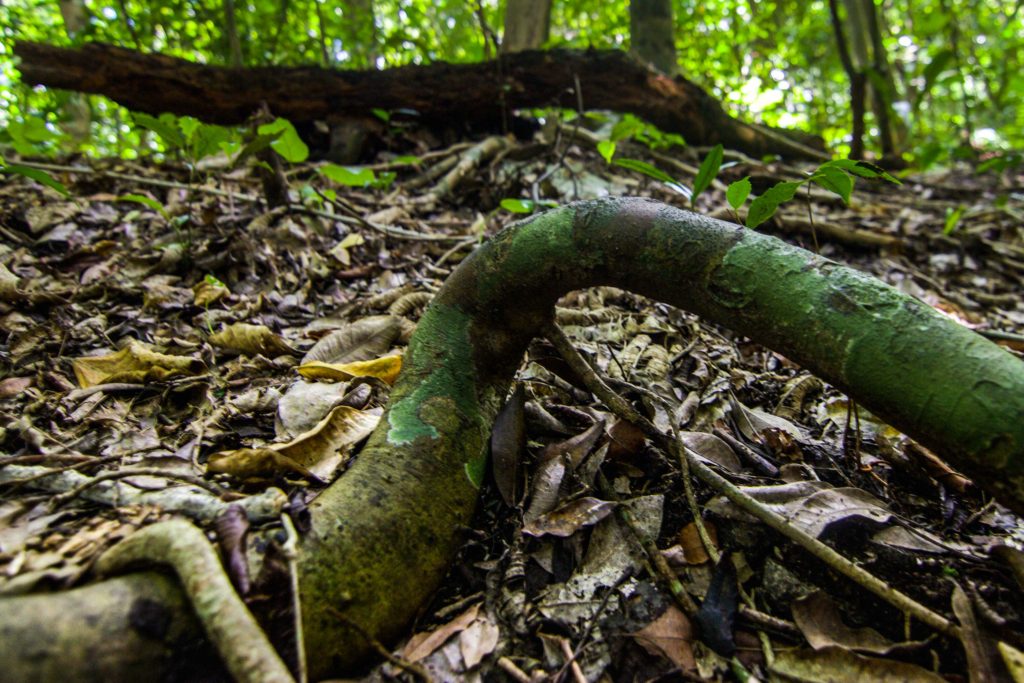
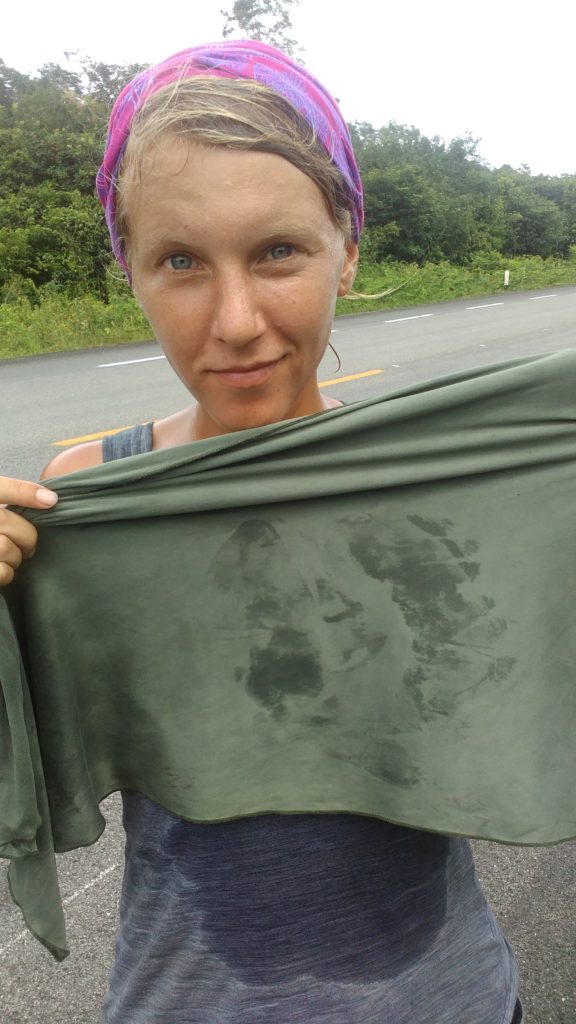
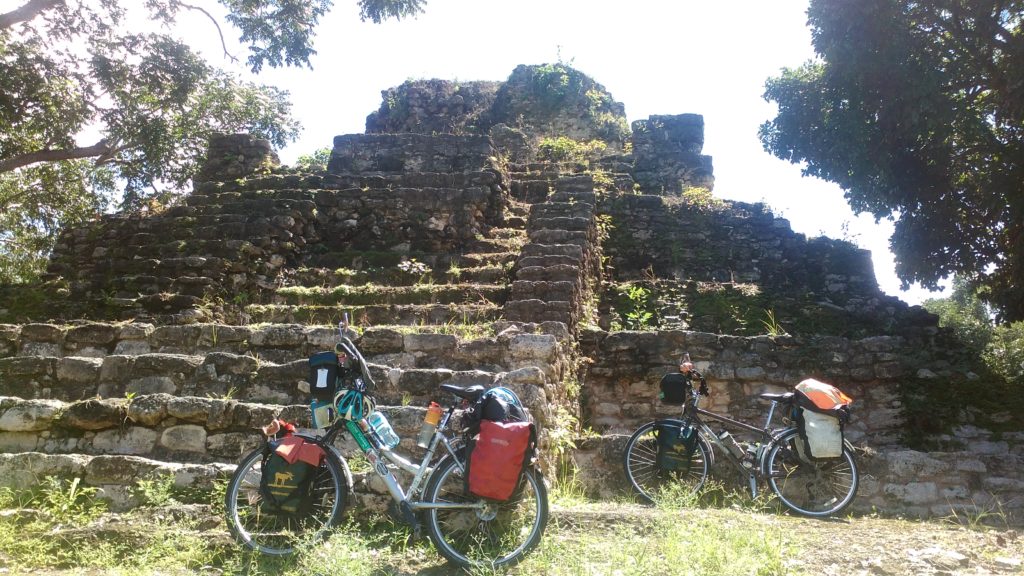
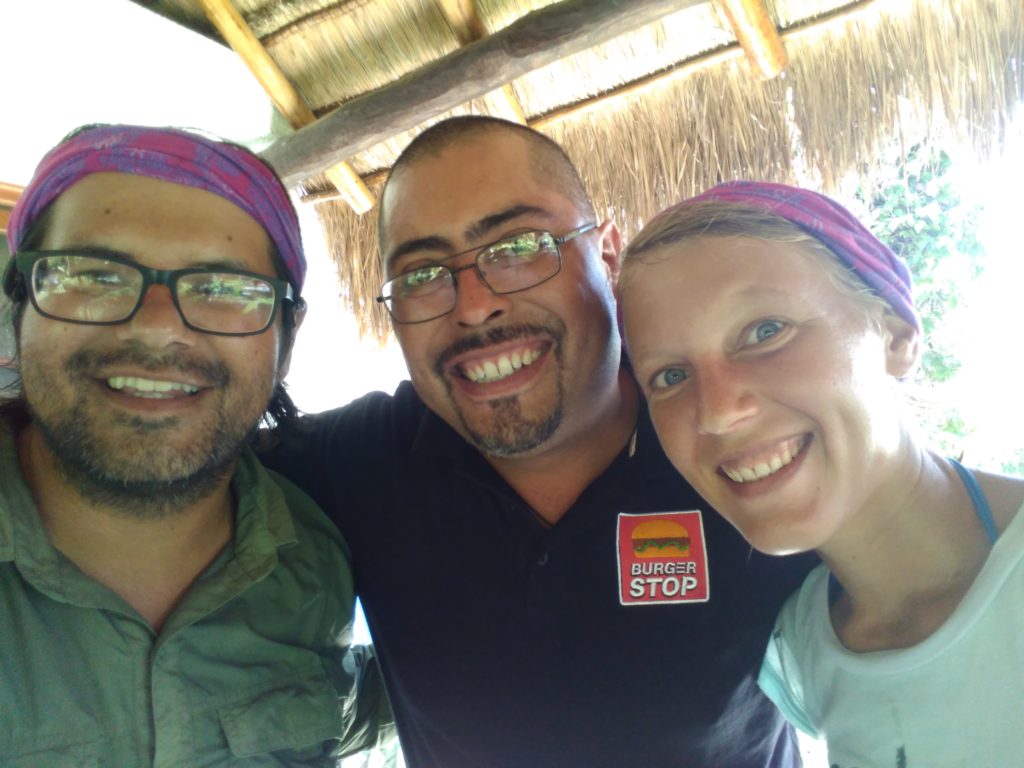
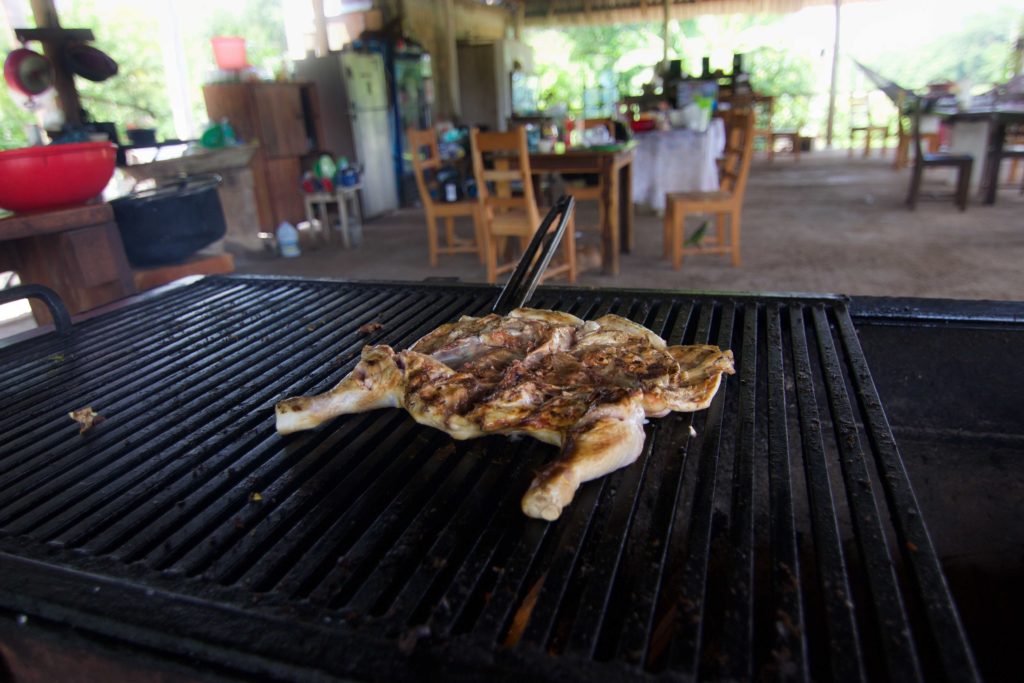
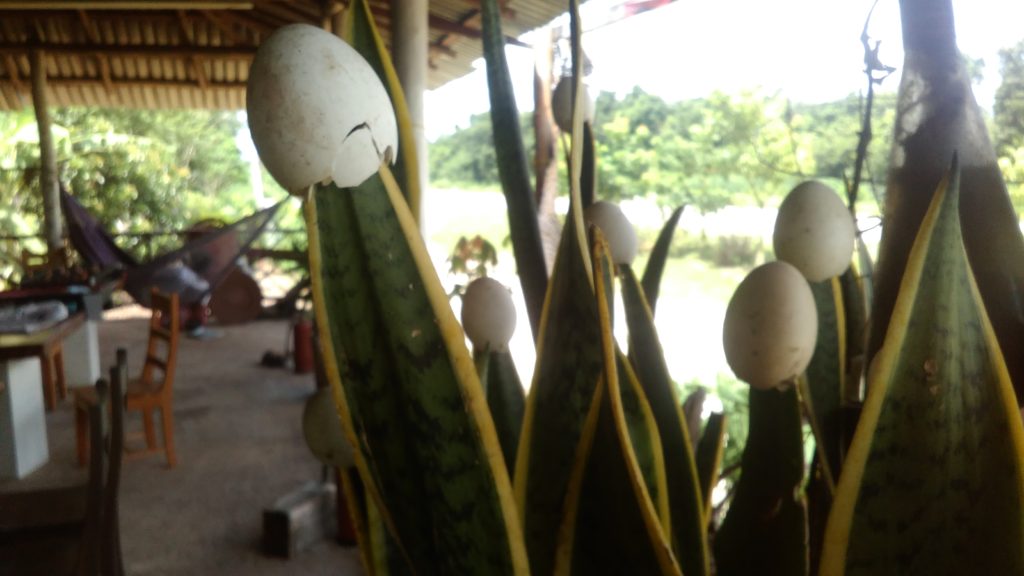
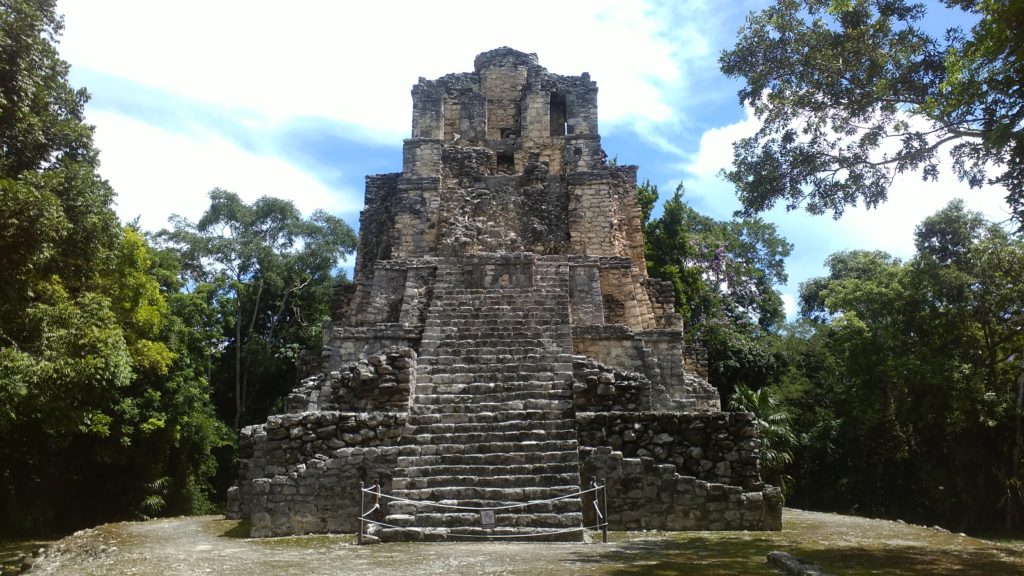
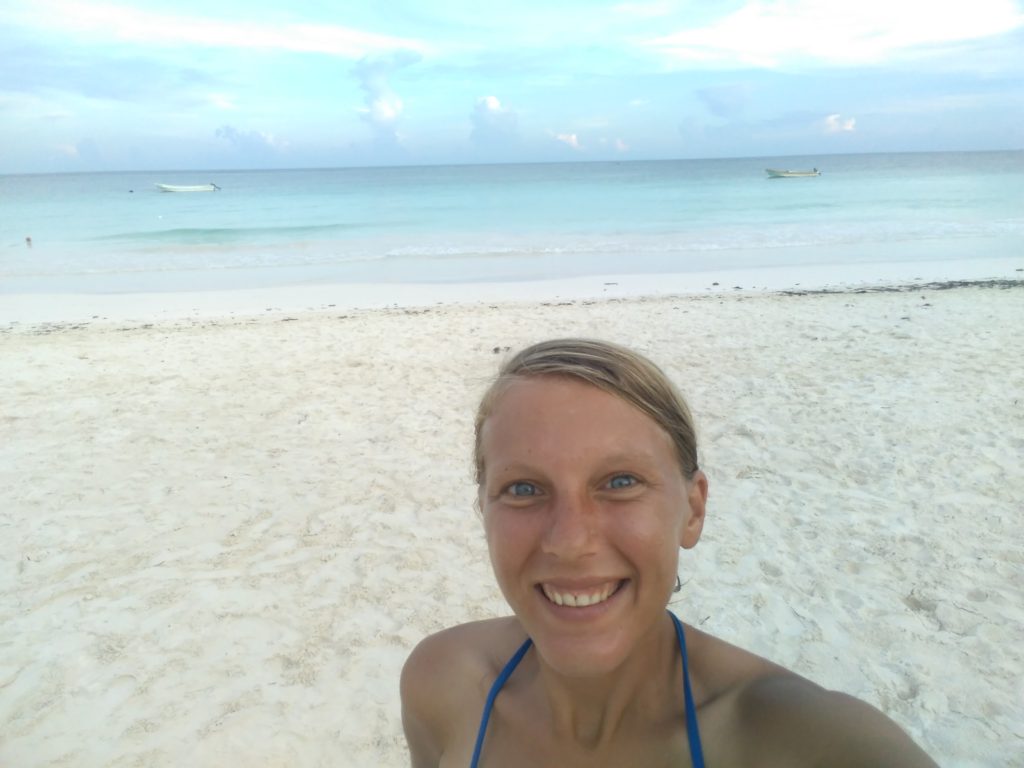
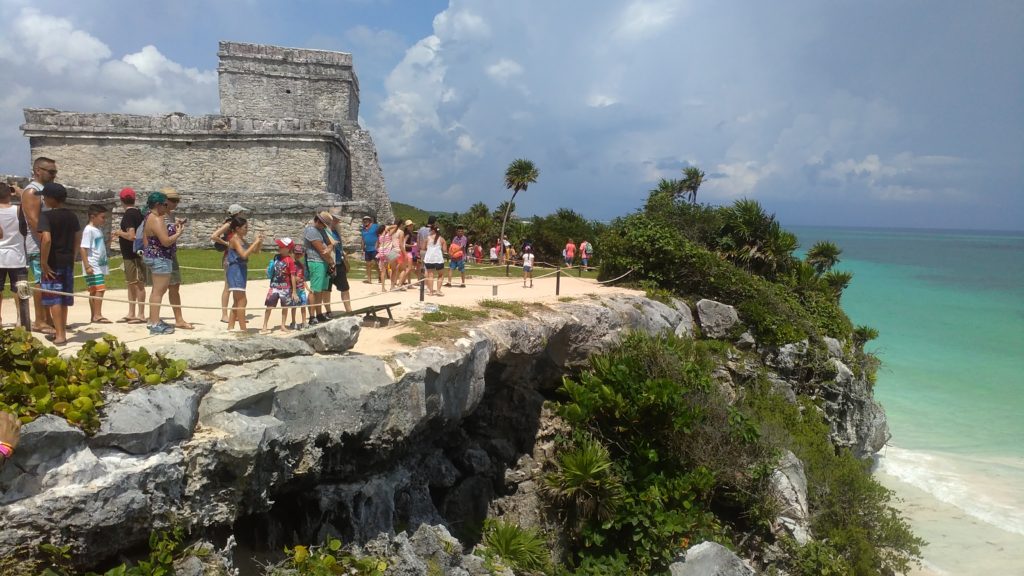
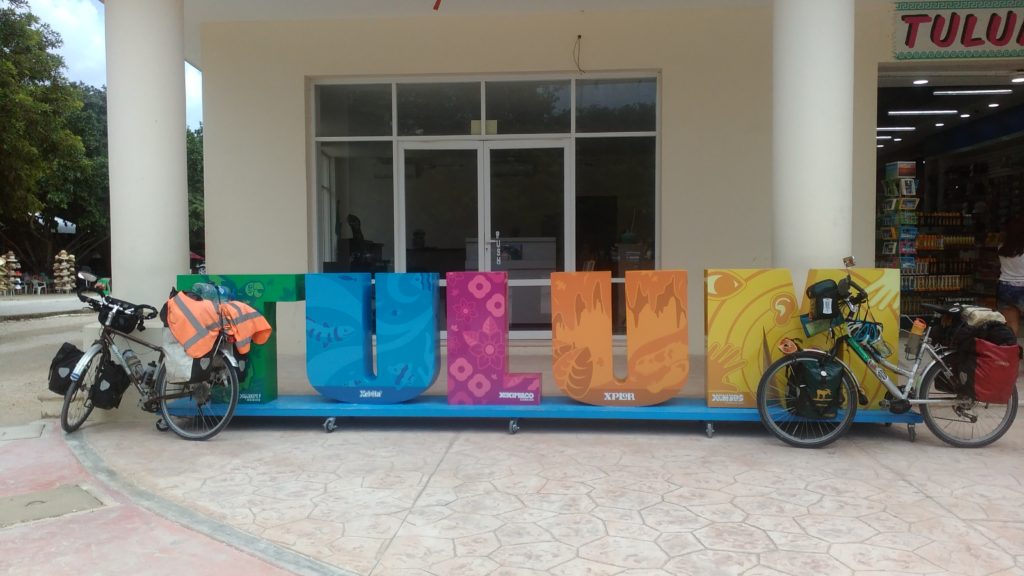
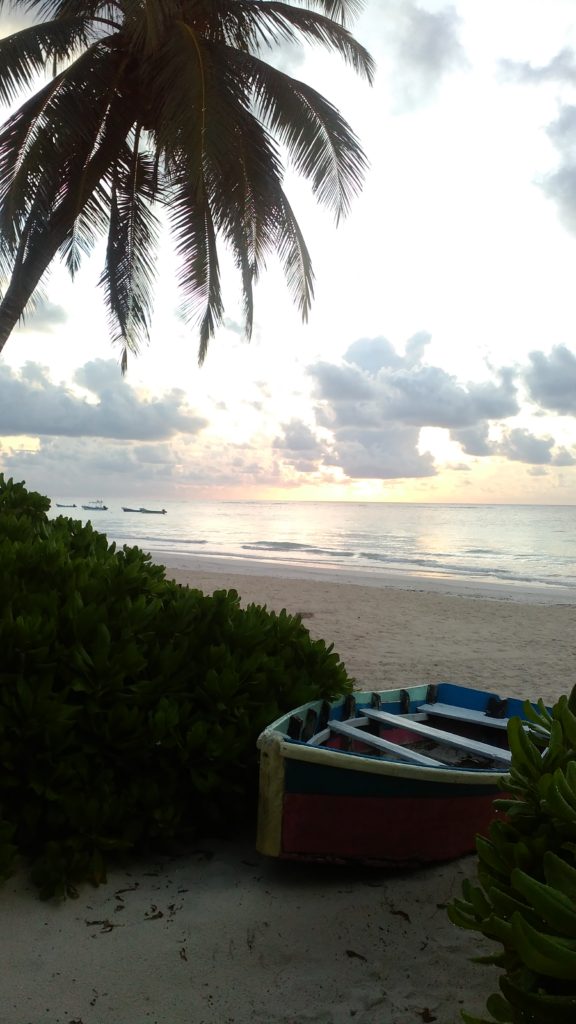
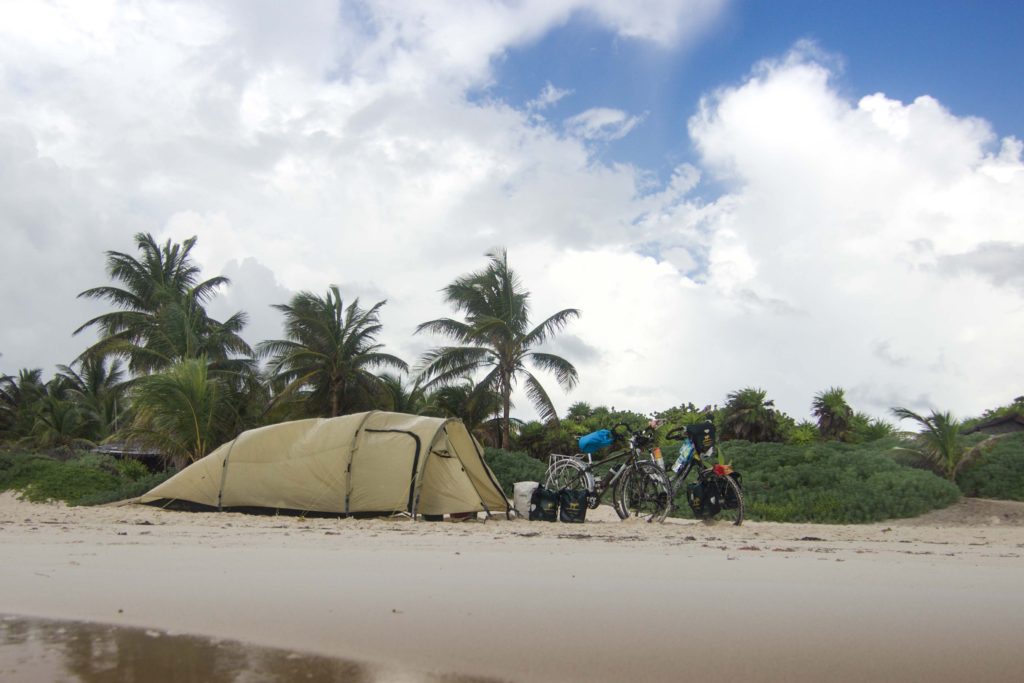
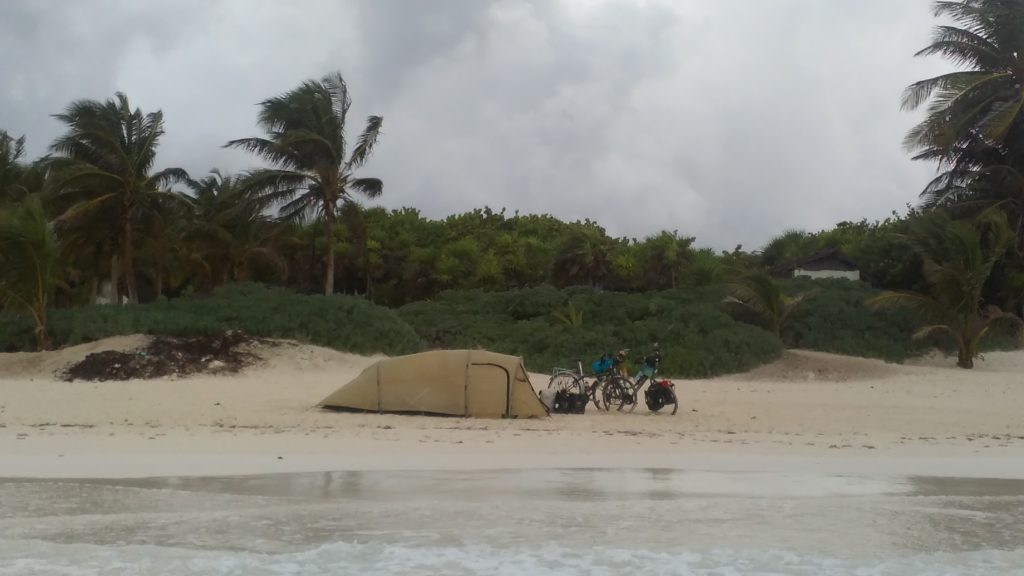
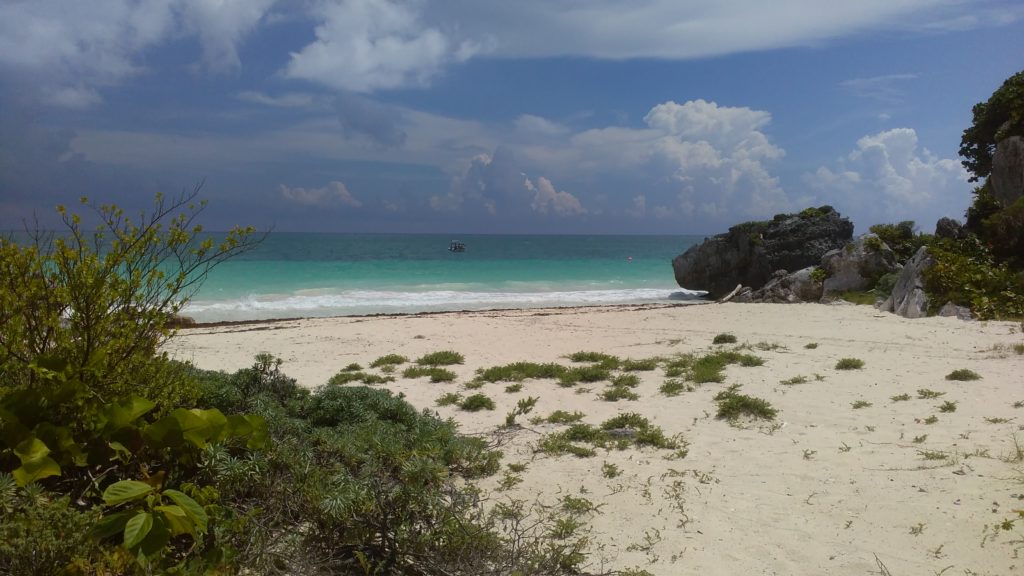
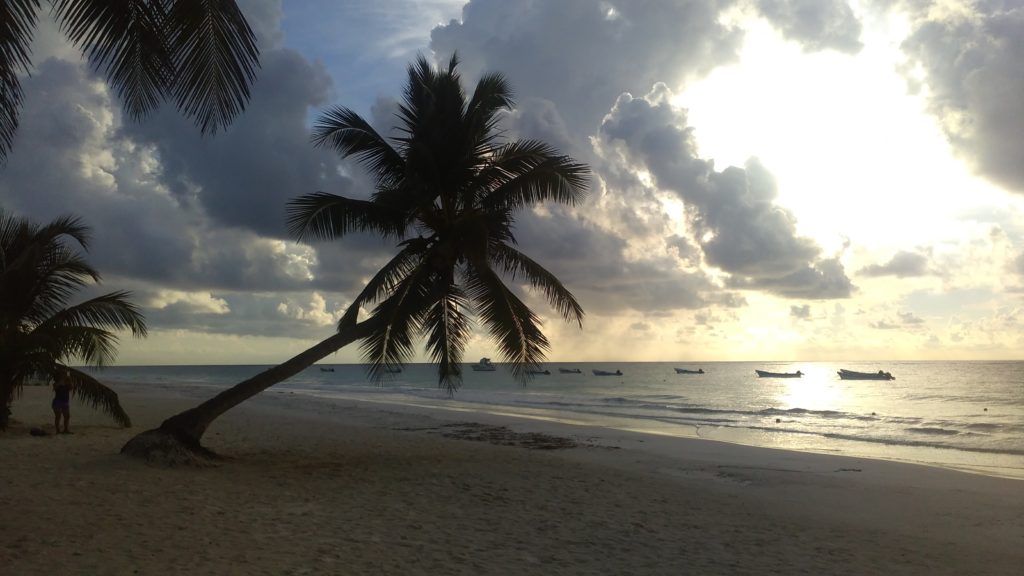
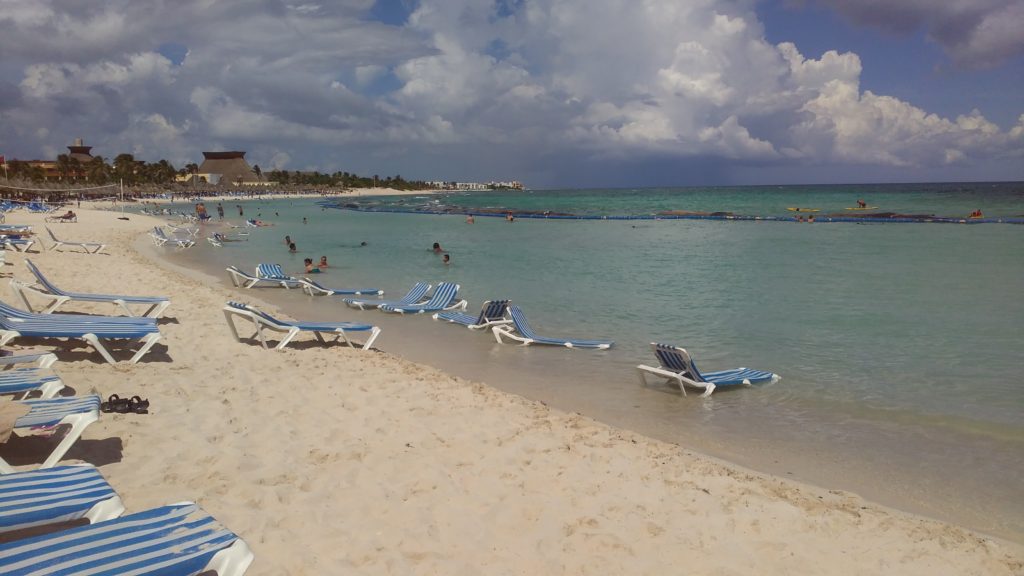
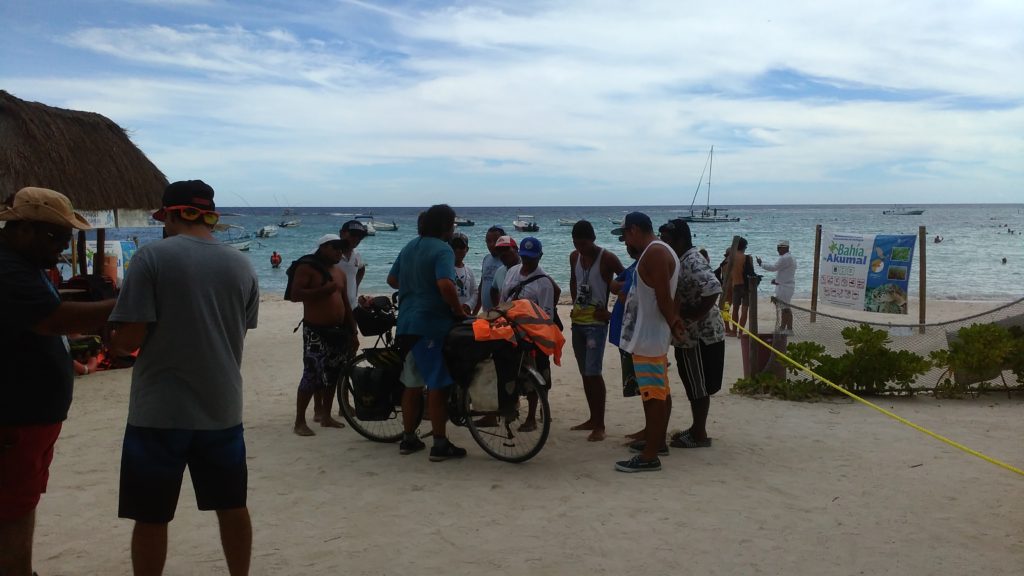
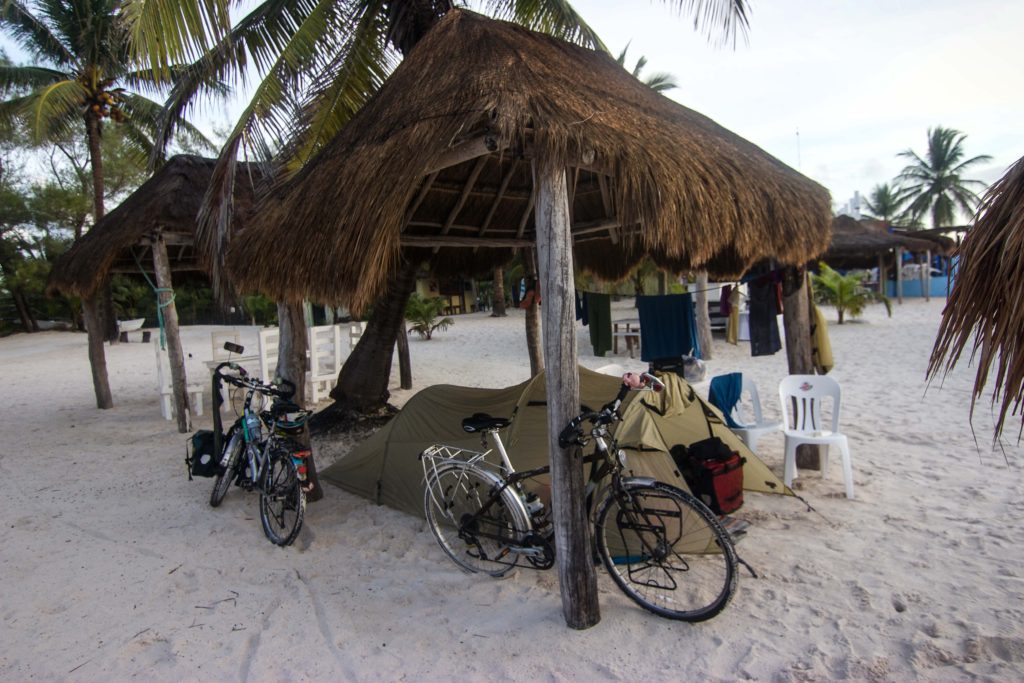
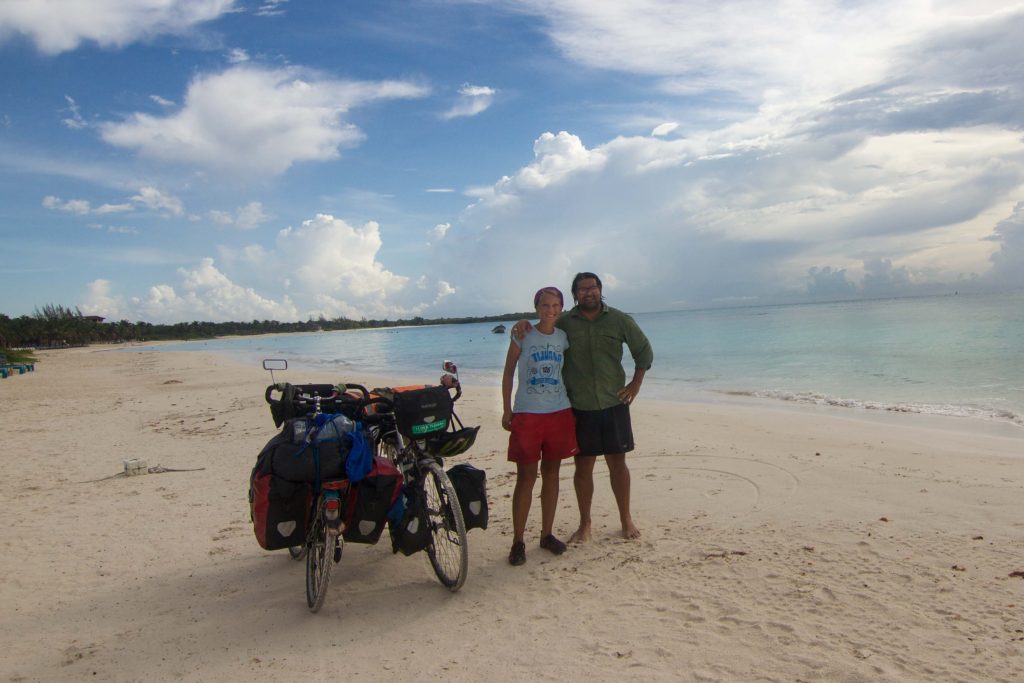
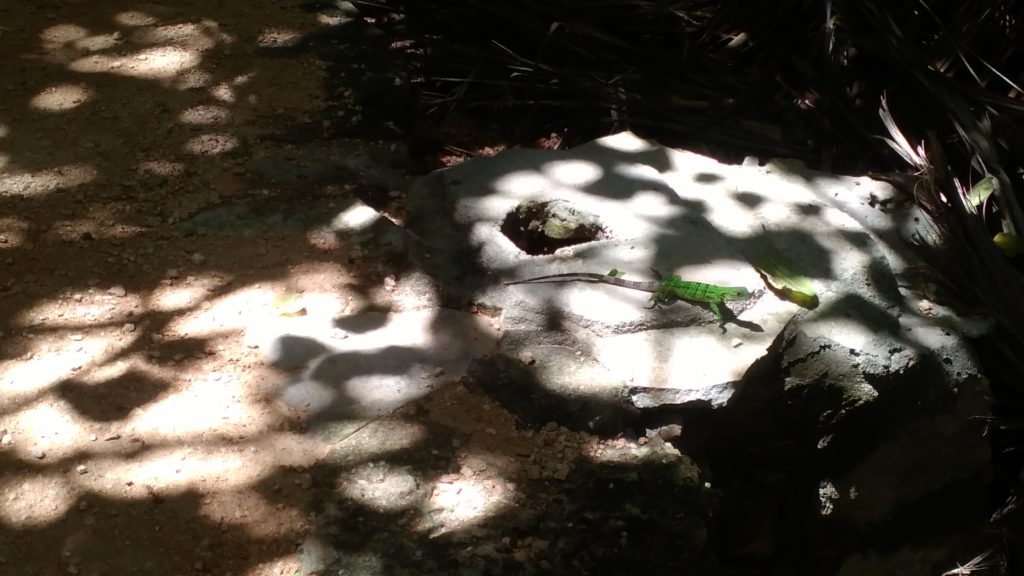
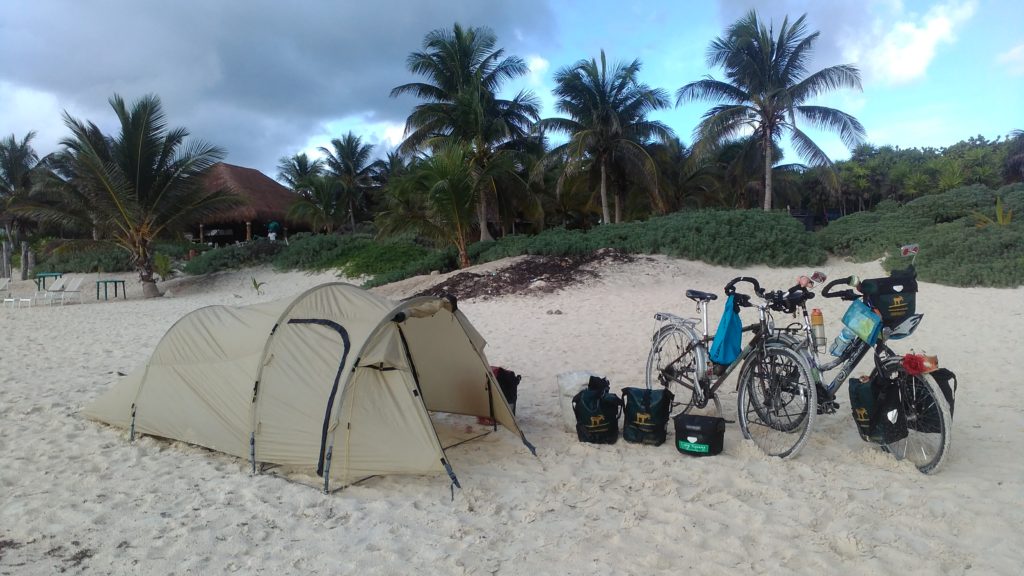
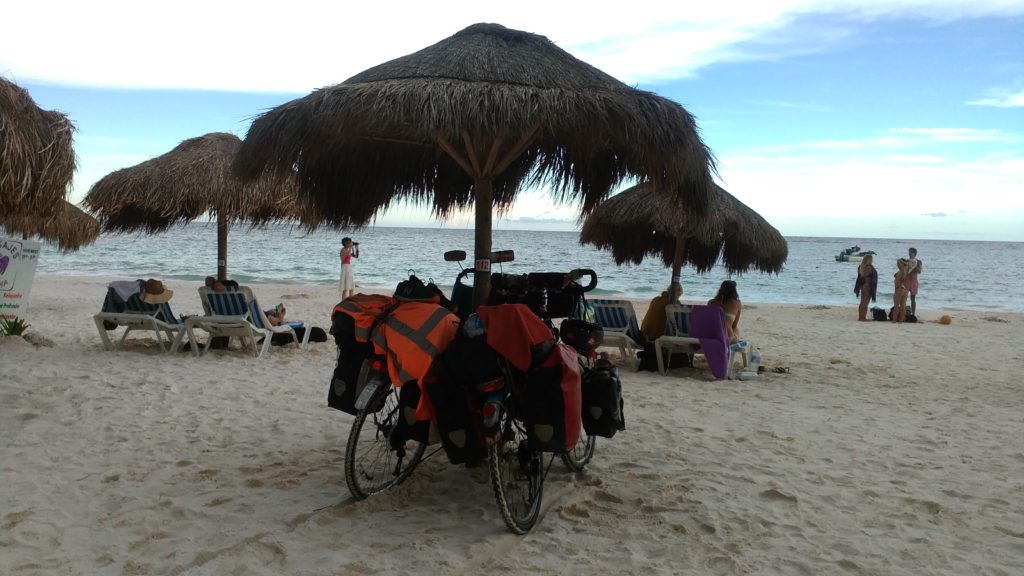
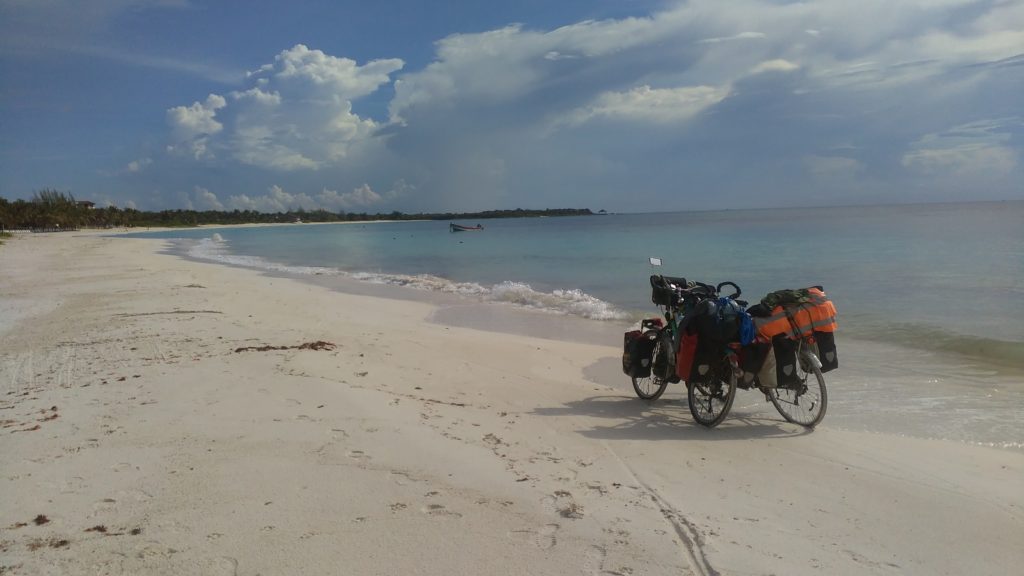
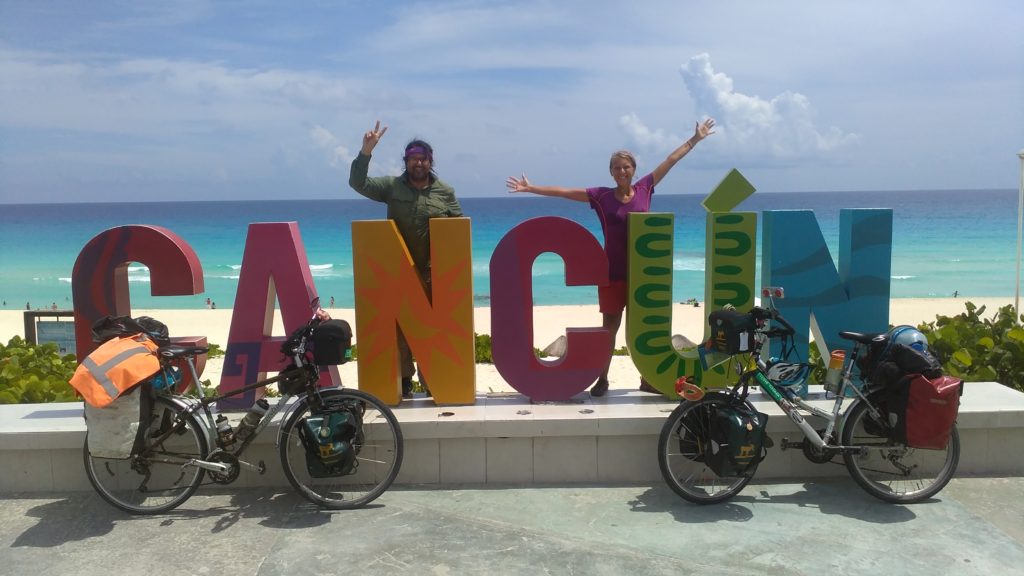
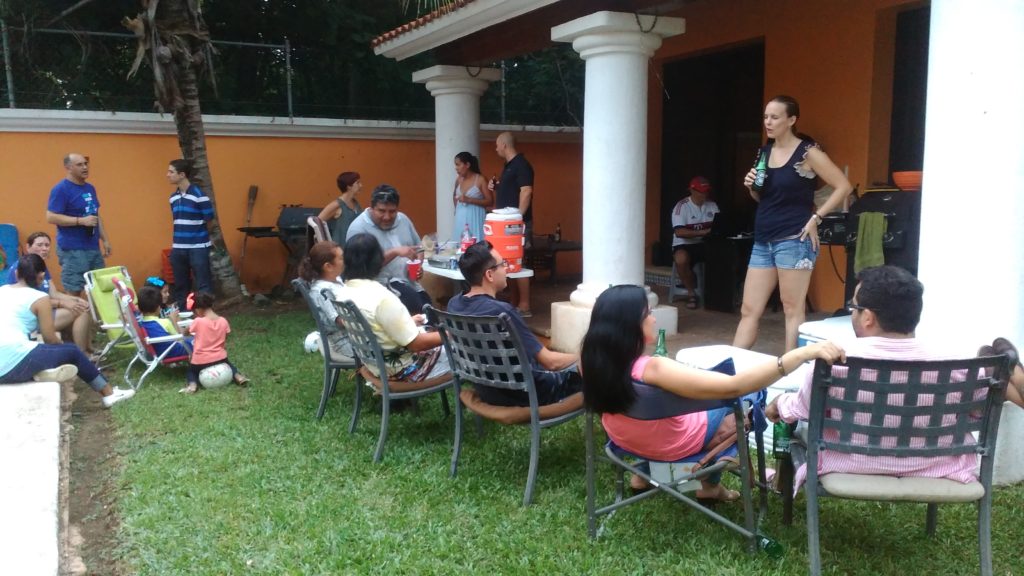
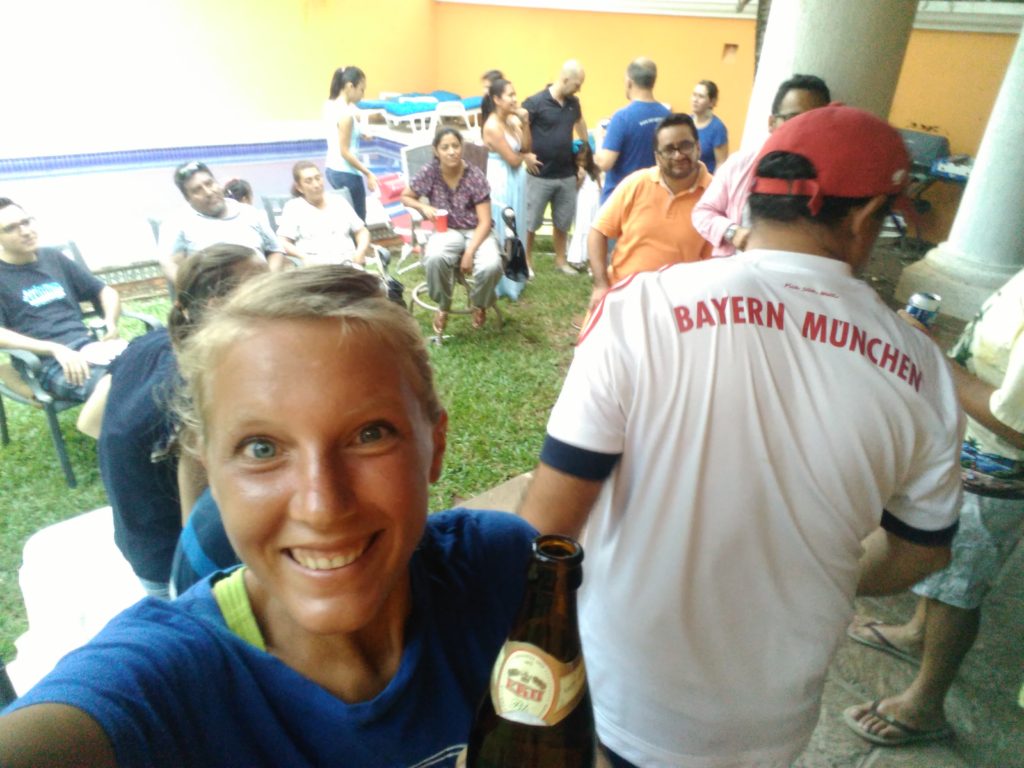

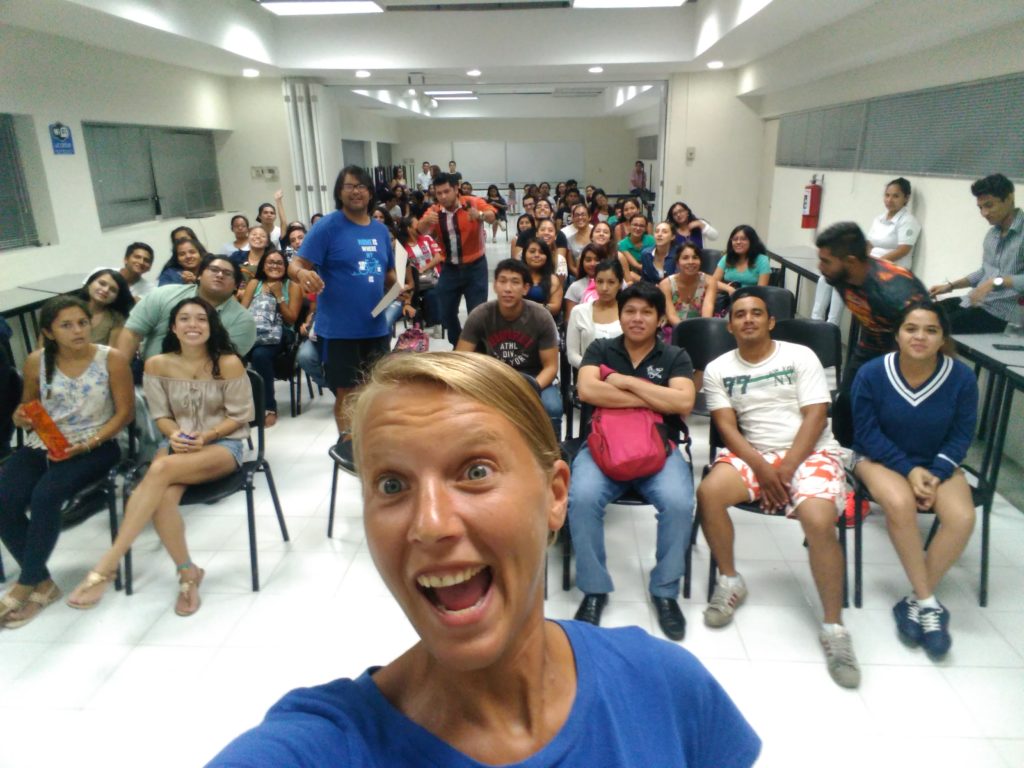
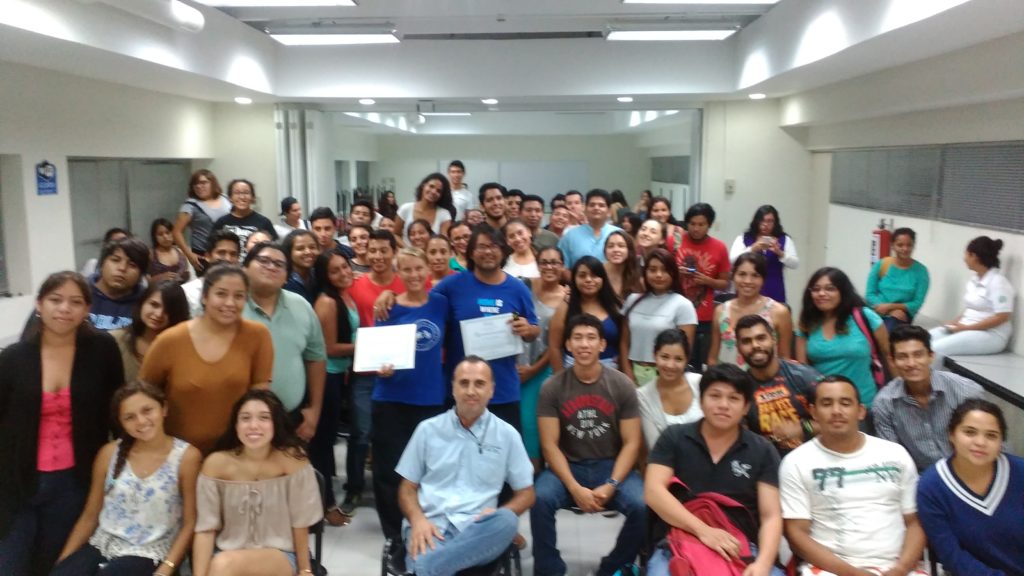
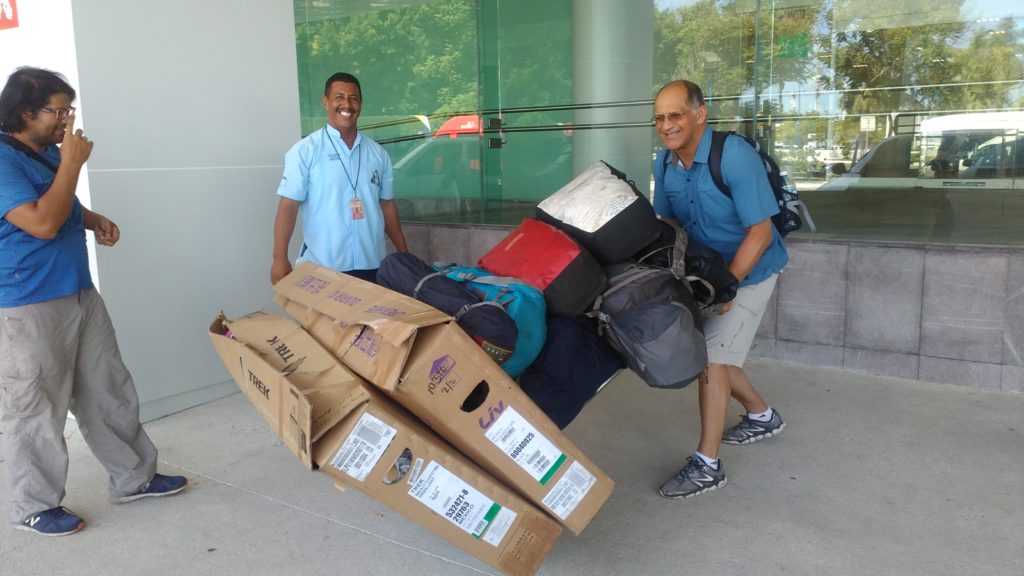





Pingback: Mexikos Karibikstrände mit dem Fahrrad entdecken - Tasting Travels
Pingback: Maya ruins and rain forest – Yucatán by bike - Tasting Travels
Pingback: Analyzing my own culture – Three weeks in the familiar unfamiliar Germany - Tasting Travels